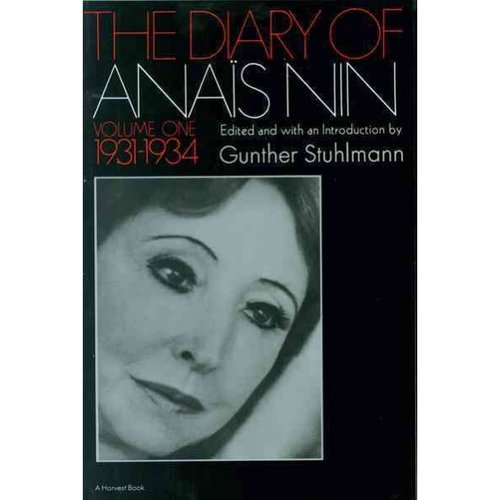

Volume V was published in 1974, describes her first trip to Acapulco, the beginning of her double life in Sierra Madre, California as well as in New York, the death of her mother and the progress of her feelings and career. Nin's impression of Miller was rather startling, as she fell in contemplation of his literacy. During his time, Henry Miller started to influence the writings published in Louveciennes in 1966. By the end of this volume, Henry has published Tropic of Cancer and she had completed House of Incest (published, 1936) and Winter of Artifice (published 1939).

During this period, her father re-enters her life. She discusses her psychoanalytic sessions with Rene Allendy and Otto Rank at length. Many of the early entries deal with Henry and his fascinating wife June. Volume One covers the most important years of her relationship with Henry Miller. Guiler's name is not once mentioned in this volume. Inscription from Nin to Marjorie Anaïs Housepian Dobkin in a first edition of the original volumeįirst published in 1966, it depicts Nin living in Louveciennes, just outside Paris, with her husband, banker Hugh Parker Guiler.

The expurgated editions were published by Harcourt Brace Jovanovich. The "unexpurgated" versions of the diaries are more sexually frank than the versions published in the 1960s and 1970s. This is because in 1986, Rupert Pole, Nin's widower and literary executor, began to publish what are now termed the "unexpurgated" versions of the diary. The series of published diaries that made their appearance starting in 1966 are now sometimes referred to as the " expurgated" editions. Six more volumes of her diary would follow. The published version of her diary would be very popular among young women, making Nin a feminist icon in the 1960s. Due to its size (in 1966, the diary contained more than 15,000 typewritten pages in some 150 volumes) and literary style, she would not find a publisher until 1966, when the first volume of her diary would be published, covering the years 1931–1934 in her life. Despite the attempts of her mother, therapists Rene Allendy and Otto Rank, and writer Henry Miller, to break Nin of her dependence on the diary, she would continue to keep a diary up until her death in 1977.Īs early as the 1930s Nin had sought to have the diary published. Over the years, the diary would become Nin's best friend and confidante. Nin would later say she had begun the diary as a letter to her father, Cuban composer Joaquín Nin, who had abandoned the family a few years earlier. The Diary of Anaïs Nin is the published version of Anaïs Nin's own private manuscript diary, which she began at age 11 in 1914 during a trip from Europe to New York with her mother and two brothers.


 0 kommentar(er)
0 kommentar(er)
